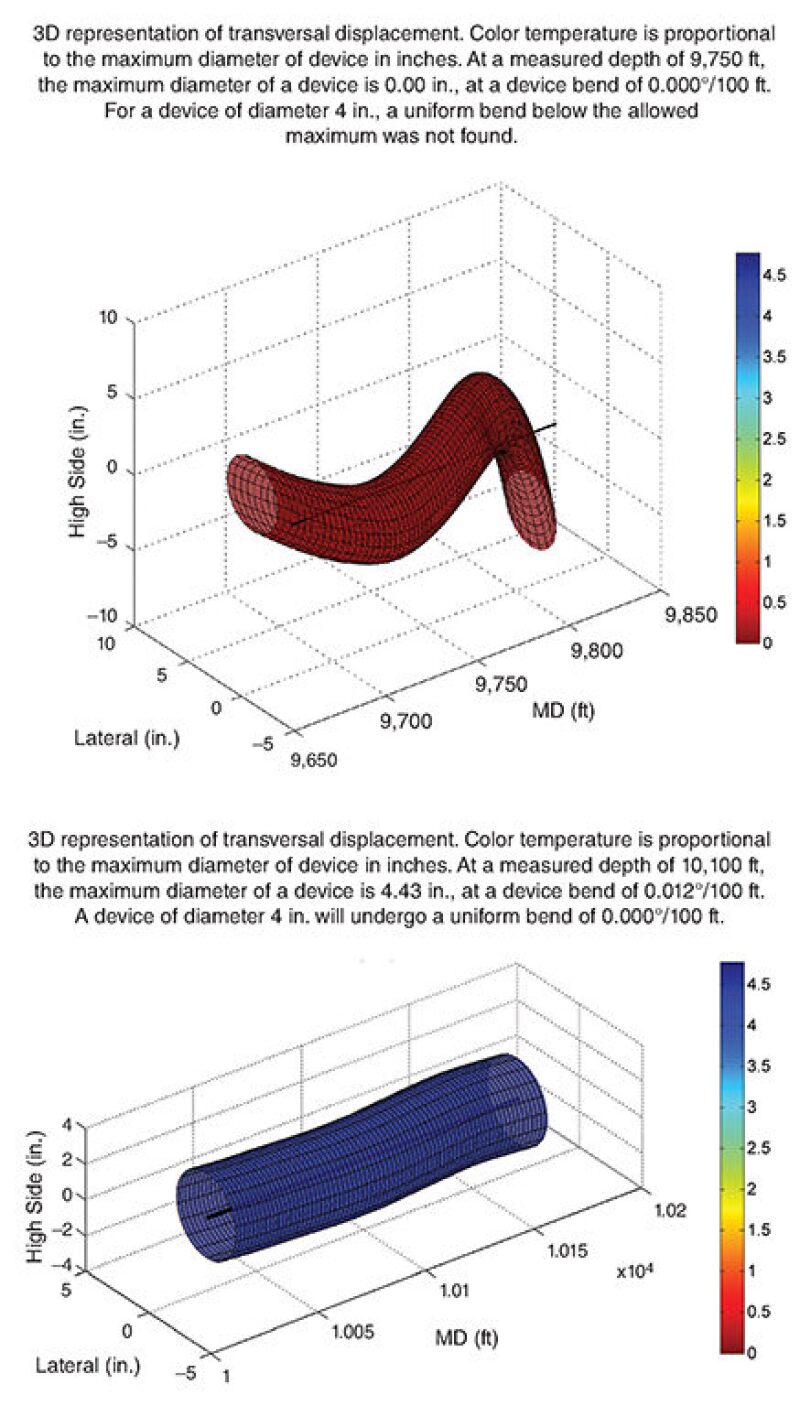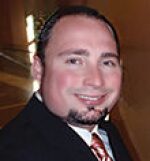Wellbore tortuosity is a term that has steadily increased in relevance to the oil and gas industry over the past decade, but its importance is especially clear in the current environment. The convergence of several major global events—the ongoing COVID-19 pandemic and persistent weakness in commodity pricing—combined with the industry’s general attitude toward rate of penetration as the performance driver is leading to wells of inferior quality being drilled. The issue of wellbore quality is exacerbated by the division among drilling, completions, and production as functional disciplines, leading to dramatically different objectives and methods of quantifying success in each project phase. In wells with high tortuosity, the drilling process and drilling efficiency are affected, as well as the effectiveness of the completions and production equipment in achieving reservoir return rates.
Defining wellbore tortuosity in relevant areas, such as openhole wellbores, production tubing, or casing, is often a very difficult task; historically, it has been a technical area fraught with challenges and misunderstandings. Though metrics designed to analyze wellbore tortuosity were developed in the past several decades, these generally relied on using the calculated dogleg of the wellbore every 95 ft. While such technologies were used with limited success, the received information lacked the precision and granularity necessary to explain the true difficulties of running and operating equipment in the well. Innovation was necessary.
One such innovation is a system from Gyrodata that generates wellbore tortuosity logs in conjunction with a gyroscopic surveying tool or with another service that provides comparable data. The system defines reference lines for the wellbore path based on survey data and determines displacements of the wellbore path from the reference lines. Through a series of calculations based on this information, the wellbore shape can be represented and visualized in 3D, allowing an operator to make critical decisions on well development and placement for artificial lift and other equipment in line with areas of low tortuosity. By collecting high-resolution data at 1-ft intervals vs. the standard stand-length intervals of measurement-while-drilling (MWD) tools, the technology reveals areas of high sideloading forces and high friction that would otherwise be invisible. This allows improved rod-guide placement, reducing or eliminating casing (tubing) damage and necessary workovers. Also, the technology allows identification of areas of low tortuosity, thereby reducing premature failures, increasing equipment life, and mitigating cable damage while setting the electrical submersible pump (ESP).
The following case studies provide several examples illustrating that the wellbore tortuosity analysis reveals areas of significant tortuosity that otherwise remain unseen. In three projects, the operators using the system were able to re-evaluate their downhole equipment placement after receiving the tortuosity analysis, improving project economics.
Case Histories
Permian Basin. An operator in the Permian Basin experienced an ESP failure and was in the process of replacing it with a new ESP. Previously, the operator struggled with premature ESP failures due to cable and stator/armature damage caused by a suboptimal set depth. Not only were the multiple pump failures causing equipment-related financial losses, but they were also creating financial losses due to decreased production. The operator required an in-depth analysis of the wellbore and its intricacies to address these issues before they became more severe.
Gyrodata ran a high-resolution wellbore tortuosity analysis, producing data on tortuosity, total displacement, and maximum diameter of the device. The system was run from surface to 10,300 ft in 5½-in. casing to log the entire vertical section of the wellbore. The operator provided specifications of a 5½-in., 20-lb casing inside diameter, 9,750-ft installation depth, and 400 series, 145‑ft ESP dimensions. The analysis revealed that at the 9,750-ft proposed set depth, tortuosity was high enough to present a problem; in this area, the maximum diameter of a pump without bending would be less than that of the 400 series ESP (Fig. 1).

Gyrodata recommended an optimum set depth of 10,100 ft for the ESP based on the tortuosity analysis, allowing an additional 300 ft of depth for fluid drawdown. Gyrodata also highlighted areas of the wellbore at 495 ft and from 5,446 to 5,838 ft that could potentially cause cable issues when traversing the ESP to that depth. To account for these trouble areas, the operator reduced the tubing size from 2⅞ to 2⅜ in., increased the number of cable clamps, and slowed traveling speeds, allowing the operator to successfully place the ESP at the recommended set depth without damaging it. As of June 2020, the ESP was still online and had been running for more than 200 days without damage or failure.
Bakken Shale. An operator in the Bakken Shale was experiencing excessive tubing failure rates, leading to an average of three workovers per year. Conservative estimates of annual workover costs were approximately $200,000, not including additional lost revenue from having to shut in production during downtime. After exhausting all conventional methods of remedying the problem, the operator decided that a different approach was necessary. Gyrodata was asked to provide it with wellbore tortuosity analysis to identify problem areas in the well and to propose an optimized placement for the rod guides.
Gyrodata suggested the operator run a high-resolution tortuosity analysis to obtain a more accurate picture of what was going on downhole. After processing the collected data on tortuosity, contact points, sideloading force, and normalized displacement in 1-ft increments, the operator found a significant number of tortuosity spikes vs. what was shown in the MWD data (Fig. 2). With a complementary obstruction analysis, the optimal locations for the placement of new rod guides were discovered.

After accurately placing the rod guides at locations downhole where sideloading forces against the tubing would not cause premature failure, the operator effectively eliminated the need for workovers, reducing the rate from an average of three times per year to going more than a year without a single failure. In the first year of operation alone, this saved the operator approximately $200,000 in associated costs. This figure does not include the additional benefit of eliminating the shut-in production when equipment failed.
Midland Basin. An operator in the Midland Basin decided to use an ESP as the method of artificial lift in a horizontal well. The well profile consisted of a kickoff point at 8,315-ft measured depth (MD), build section to horizontal at an average rate of 9° per 100 ft, and a lateral section until 17,729-ft MD. The selected pump was 126-ft long and 4 in. in diameter. Based on dogleg-severity values derived from the initial MWD data, the operator was going to place the pump between 7,760 and 7,886 ft. Due to a tubing miscount, however, it was actually placed at 8,088 ft, which the operator did not realize until later revealed by forensic investigation. At the set depth, the pump failed after just 5 days with a broken shaft which had most likely been caused by extreme bending. The operator decided to conduct a wellbore tortuosity analysis to better understand the cause of failure with the objective of placing a new pump in a location where it would not prematurely fail.
Gyrodata collected high-resolution tortuosity data to determine total displacement and maximum diameter of the straight device, providing the operator with a 3D wellbore visualization to clearly see the problem (Fig. 3). Using this analysis, the operator found that the optimal location was between 7,610 and 7,732 ft based on the pump’s effective diameter. At an MD of 7,670 ft, the maximum diameter that would allow a uniform bend was 4 in. at a device bend of 1.637° per 100 ft.

The new pump was placed at the recommended depth based on the tortuosity analysis and lasted 4 months without issue before failing. A failure analysis showed that the placement of the pump was not the issue but rather that excessive gas production in the area caused high levels of vibration. After correcting the gas issue, a new ESP was installed at the same depth, where it operated without issue for 6 months. At that point, the unit was replaced by a beam pump due to production declines in the well.
Conclusion
The evolution of the oil and gas industry is demanding more than just efficiency gains in the drilling arena; what is now more critical than ever is wellbore quality. The direct correlation between how a well is drilled and how well it ultimately produces clearly demonstrates a need to step back from the “drill faster” mentality and simply “drill better.” When it comes to completion and production equipment, the quality of the well should be the new performance driver. By analyzing and understanding wellbore tortuosity in wells where quality is a concern, however, and placing production equipment downhole where it needs to be, the industry can address the current issue. Technology innovation will drive improved production and fewer equipment failures in these wells, allowing operators to overcome related financial and operational problems at a time when capital must be conserved.

Rob Shoup is currently the operations technical support manager for Gyrodata where he works with engineering, product line, and operations to develop new technologies and solutions. He has held a number of positions over the past 32 years, including vice president of special projects, North American regional manager, global technical services manager, and senior technical advisor. He spent 5 years in the field running gyroscopic surveys and orientations and integrating Gyrodata’s technology with various service providers’ offerings. Shoup has been an integral part of the successful development and deployment of Gyrodata’s solid-state sensor technology and wellbore tortuosity logging system. He is also an active member of SPE and the Industry Steering Committee on Wellbore Survey Accuracy. He graduated from the Institute of Electronic Science at Texas A&M University.

Justin Boltz is a senior business development representative at Gyrodata where he provides technical expertise to support sales and growth efforts in the Bakken Shale and Powder River Basin. Previously, Boltz worked with Pathfinder Energy in its directional drilling division, supporting field operations, product line, and sales efforts. He has almost 20 years of experience in the oil field across technical and nontechnical positions. He holds a BS in business management from Casper College in Wyoming.

Stephen Forrester is content development manager at Gyrodata where he oversees technical writing and strategic communications initiatives for gyroscopic surveying and wireline product lines. Previously, he worked at National Oilwell Varco in technical writing roles, covering rig equipment, completion tools, bottomhole assembly design, downhole drilling dynamics, and drilling automation. Before that, he worked in the oil and gas division of Lloyd’s Register, where he was a technical editor for reports on inspections and certifications of subsea blowout preventers. As a member of SPE, Forrester serves on the editorial board for The Way Ahead and works with the SPE Young Member Engagement Committee.

